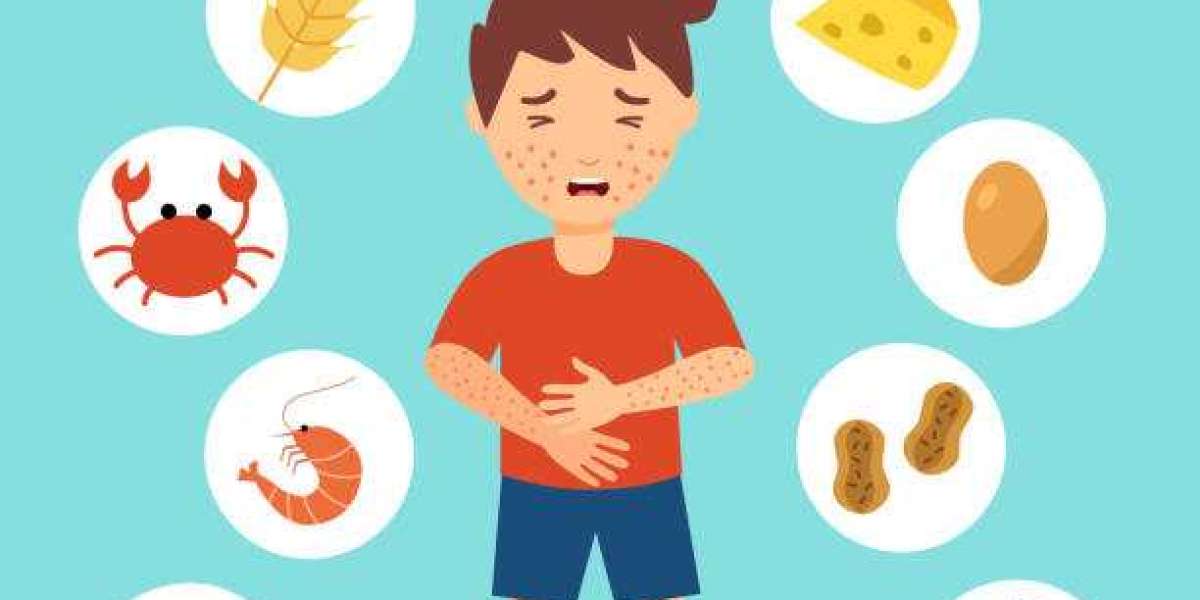Living with food allergies can feel like navigating a minefield. One wrong bite, and you’re facing anything from mild discomfort to life-threatening reactions. For millions worldwide, food allergies are a daily reality, impacting everything from dining out to grocery shopping. But here’s the good news: the world of food allergy treatment is evolving rapidly. From innovative management strategies to groundbreaking research hinting at potential cures, science is offering hope to those affected. In this blog, we’ll dive into the latest advancements in food allergy treatments, explore how they work, and share what they mean for the future.
Understanding Food Allergies: A Quick Overview
Before we explore treatments, let’s clarify what food allergies are. A food allergy occurs when the immune system mistakenly identifies a harmless food protein as a threat, triggering a response. Common culprits include peanuts, tree nuts, milk, eggs, wheat, soy, fish, and shellfish. Symptoms range from hives and swelling to anaphylaxis, a severe reaction requiring immediate medical attention.
According to the Food Allergy Research Education (FARE), approximately 32 million Americans live with food allergies, and the numbers are rising. This growing prevalence has fueled research into better food allergy management and potential cures, giving hope to families and individuals seeking relief.
Traditional Food Allergy Management: The Foundation
For years, the cornerstone of food allergy treatment has been avoidance and preparedness. This means steering clear of trigger foods and carrying epinephrine auto-injectors (like EpiPens) for emergencies. While effective, this approach places a heavy burden on individuals, requiring constant vigilance.
Allergen avoidance involves reading labels, asking about ingredients, and navigating social situations with care. For parents of children with allergies, it’s a 24/7 job. Meanwhile, epinephrine remains the go-to for anaphylaxis, but it’s a reactive measure, not a solution. Education and awareness campaigns have improved safety, but they don’t address the root cause.
Despite its challenges, traditional management has saved countless lives. Yet, the dream for many is a world where food allergies don’t dictate daily life. That’s where recent advancements come in.
Immunotherapy: A Game-Changer in Food Allergy Treatment
One of the most promising developments in food allergy research is immunotherapy. This approach desensitizes the immune system to allergens by gradually introducing tiny, controlled amounts of the trigger food. Over time, this can reduce the severity of reactions or even allow patients to tolerate small amounts of the allergen.
Oral Immunotherapy (OIT)
Oral immunotherapy (OIT) is leading the charge. In OIT, patients consume increasing doses of the allergen under medical supervision. For example, someone with a peanut allergy might start with a minuscule amount of peanut protein, slowly building tolerance. The FDA-approved Palforzia, a peanut allergy treatment, is a prime example. It’s designed for children aged 4-17 and has shown remarkable results in reducing reaction severity.
Real-life impact? Imagine a child who can safely attend a birthday party without fear of accidental peanut exposure. While OIT isn’t a cure—it requires ongoing maintenance doses—it’s a significant step toward food allergy relief.
Sublingual Immunotherapy (SLIT)
Sublingual immunotherapy (SLIT) is another option. Here, allergen extracts are placed under the tongue, where they’re absorbed by the immune system. SLIT is less intensive than OIT and has a lower risk of side effects, making it appealing for younger patients or those with milder allergies. Research is ongoing, but early results are promising, particularly for peanut and milk allergies.
Epicutaneous Immunotherapy (EPIT)
Epicutaneous immunotherapy (EPIT) uses a skin patch to deliver allergens. The patch, worn daily, releases small amounts of the allergen through the skin, training the immune system without the need for ingestion. The Viaskin Peanut patch, currently in clinical trials, is a leading candidate. It’s non-invasive and user-friendly, offering hope for those hesitant about oral treatments.
Biologics: Precision Medicine for Food Allergies
Another exciting frontier is the use of biologics—medications derived from living organisms. These drugs target specific immune pathways involved in allergic reactions. Omalizumab (Xolair), originally used for asthma, is being studied for food allergies. It works by binding to IgE antibodies, which trigger allergic responses, reducing the risk of severe reactions.
In clinical trials, omalizumab has allowed patients to tolerate higher doses of allergens during OIT, speeding up the desensitization process. It’s not a standalone cure but a powerful tool in combination with other therapies. As research progresses, biologics could become a cornerstone of food allergy treatment.
Gene Therapy and the Quest for a Cure
Could we one day eliminate food allergies entirely? Gene therapy is exploring that possibility. By editing the genes responsible for allergic responses, scientists aim to reprogram the immune system. While still in early stages, animal studies have shown promise, particularly for peanut allergies.
Human trials are years away, but the potential is staggering. Imagine a single treatment that prevents allergic reactions for life. For now, gene therapy remains a long-term goal, but it underscores the bold direction of food allergy research.
Probiotics and Gut Health: A Supporting Role
The gut microbiome—the community of bacteria in our digestive system—plays a role in immune function. Researchers are investigating whether probiotics or prebiotics can reduce allergy risk or enhance treatment outcomes. Early studies suggest that certain bacterial strains may help modulate immune responses, particularly in children.
While not a standalone food allergy treatment, probiotics could complement immunotherapy or other therapies. For example, combining probiotics with OIT may improve tolerance to allergens. It’s a reminder that holistic approaches are part of the puzzle.
Challenges and Considerations
Despite these advancements, challenges remain. Immunotherapy carries risks, including allergic reactions during treatment. Access is another hurdle—therapies like Palforzia require specialized care, which may not be available in all areas. Cost is also a factor, as cutting-edge treatments can be expensive.
Moreover, not all patients respond equally. Some may achieve significant desensitization, while others see modest gains. Personalized medicine, which tailors treatments to an individual’s genetic and immune profile, could address this, but it’s still developing.
The Human Side: Stories of Hope
Beyond the science, the human impact of these advancements is profound. Take Sarah, a 10-year-old with a severe peanut allergy. Before OIT, she lived in fear of accidental exposure. After completing a Palforzia program, she can now tolerate small amounts of peanuts, giving her family peace of mind. Or consider Mark, an adult who uses omalizumab alongside OIT, allowing him to eat out with less anxiety.
These stories highlight the real-world difference of food allergy treatments. They’re not just about science—they’re about reclaiming freedom, confidence, and joy.
The Future of Food Allergy Treatments
The future is bright for food allergy management and potential cures. Researchers are exploring combination therapies, such as pairing biologics with immunotherapy for faster, safer results. Artificial intelligence is aiding in predicting treatment outcomes, while global collaborations are accelerating clinical trials.
Prevention is also gaining attention. Studies suggest early introduction of allergens (like peanuts) to infants may reduce allergy risk, reshaping how we approach food introduction. Meanwhile, advocacy groups are pushing for better access to treatments and more inclusive food labeling.
How to Stay Informed and Take Action
If you or a loved one lives with food allergies, staying informed is key. Consult an allergist to discuss options like immunotherapy or biologics. Join support groups, such as those offered by FARE, to connect with others and access resources. Follow reputable sources for updates on food allergy research and clinical trials.
Advocacy matters, too. Support policies that improve access to treatments and promote allergy-safe environments in schools and workplaces. Every step forward counts.
Conclusion: A New Era for Food Allergy Treatment
From the days of strict avoidance to the promise of immunotherapy, biologics, and gene therapy, advancements in food allergy treatments are transforming lives. While challenges remain, the progress is undeniable. For millions, these innovations mean more than just medical breakthroughs—they mean hope, freedom, and a chance to live without fear.
Whether you’re seeking food allergy relief or supporting a loved one, know that science is on your side. The journey from management to potential cures is underway, and the future looks promising. Stay curious, stay hopeful, and let’s keep pushing for a world where food allergies no longer hold us back.








